pollution
Global consumption of coal has declined significantly over the past year, driven by China, which makes up about half of the world’s demand for coal.
In a city in China’s southwestern Shichuan Province during the early hours of April 2, a man walking alongside the river suddenly noticed what appeared to be huge quantities of pale fish floating in the water.
He quickly rushed home and returned with fishing equipment, and was soon joined by crowds of amateur fishers – and local officials, who subsequently hauled 300 kilograms of fish from the river to be destroyed.
You may be familiar with oysters as the delicious seafood best eaten raw (or as ice cream) and served in months ending in “r,” but did you also know the little guys have impressive filtering skills that can clean even the dirtiest water?
Eating its fill of plankton and other particles floating around, a fully grown oyster can filter more than 50 gallons (189 liters) of seawater in one day. After seeing a few videos demonstrating this cleaning ability, some Japanese netizens started to question just how appetizing this made the once delicious-looking oyster.
Chinese cities have featured a lot in the news over the past few years. With the country experiencing rapid economic growth and its industries going into overdrive – though often with scant regard for the environment – the air quality in some cities has deteriorated to the point that health organisations have warned against spending too much time outdoors. The country’s rivers, too, bear the scars of progress as factories pump tons of waste into them, in some cases turning the water dark red.
Thankfully, though, the Chinese government has pledged to address the situation, and has this week announced plans to remove as many as six million vehicles from its roads in an effort to detoxify city air.
It’s well-known that China’s struggling with some serious air pollution, but perhaps less talked about is the toll being taken on their rivers. According to a recent survey conducted by Chinese media, 96% of respondents felt that not a single river around them was clean enough to swim in. And judging from these photos, anyone who did decide to risk a dive would probably come out looking worse than the Creature from the Black Lagoon.
China’s smog — which routinely engulfs major cities like Beijing and Shanghai — is notorious, and it’s recently reached “danger levels.” But the the smog in New Delhi, The New York Times reports, is actually worse.
The air in New Delhi “is more laden with dangerous small particles of pollution, more often, than Beijing’s,” Gardiner Harris writes, and “a very bad air day in Beijing is about an average one in New Delhi.”
As if today being a Monday wasn’t depressing enough, media outlets are reporting that the air quality and visibility in China’s capital city has become so bad that the state has begun televising live footage of sunrises on enormous screens ordinarily used for advertising. That’s right: with the real thing now almost completely hidden behind a thick layer of smog, people are actually watching nature on TV.
As many of you may be aware, China has had some serious pollution problems in recent years with contamination spreading far and wide, affecting people’s health and everyday lifestyles. With all this negative publicity, it is of no surprise that China’s tourism industry has seen a decline in visitors to the country.
However, the Hong Kong Tourism Board has come up with a rather clever and, shall we say, peculiar scheme that guarantees to get rid of the smog, at least for all the tourists who want to capture a special photo for the occasion. It comes in the form of a picturesque banner of the Hong Kong landscape that is substituted for the real, polluted background. It’s just a case of standing in front of it, saying cheese and you’re done. Granted the picture may look good but it still doesn’t solve the actual problem of pollution.
Read More
According to the April 2 edition of Chinese daily newspaper the 21st Century Business Herald, in the year 2010 an incredible 1.23 million people lost their lives across China due to air pollution-related illnesses. The number accounts for 15 percent of total deaths recorded in the country for 2010. The information was revealed by a study group at Tsinghua University on March 31.
Read More
Recent reports from Radio France Internationale (RFI)’s Chinese site suggest that China’s pollution problem is raising serious concerns within the country itself. In the push for economic growth, the China is also becoming increasingly aware of what could potentially develop into a serious problem if steps are not taken soon. In this connection, there has been heated debate on the Internet suggesting that Chinese authorities are proposing moving the capital away from Beijing.
In recent years along with many other developing Asian nations, China has been increasing its level of industrial manufacturing as it readies itself for remarkable industrial growth. However, neglecting its environment for the sake of industry has brought with it the problem of dense smog pollution, with microscopic smog particles with a diameter of 2.5 micrometres or less having been detected in overwhelming large amounts in China’s air in recent days.
The smog is the same as that found in factory exhausts, car fumes and the like. Measured per cubic meter, at one instance the observed value of pollution in Beijing reached levels 10 times the Chinese government’s recommended safety level. If one were to go by the Wealth Health Organization (WHO)’s recommended value, the figure rises to 40 times greater than normal. When it comes to pollution, it is thought that of the asian nations undergoing remarkable growth, 70% of nations are reaching a critical level. The toxic substances that seep out into the environment cause asthma, pneumonia and even in some cases death.
Of course, those living in highly polluted areas will surely want to know how their air compares, but measuring the levels each time can prove tiresome and expensive. With this in mind, one innovative company called Clean Air Asia has stumbled upon a way determine just how polluted your air is, and has designed an interactive map based on – wait for it – nostil hair.
For days now Beijing has been suffering from a prolonged spell of the worst air pollution in the city’s history, a crisis so bad that it has been dubbed the “airpocalypse”.
The air has been classified as hazardous to human health and has already sent countless people to the hospital for respiratory ailments. The city is blanketed in a thick grey fog that is said to smell of coal and sting the eyes, leading officials to close highways, force the cancellation of flights and outdoor activities, and warn people in affected areas to remain indoors.
According to a researcher at Kyushu University, China’s giant toxic cloud of pollution is now expected to cross over to western Japan sometime later today.
The river you see here has been used by the residents of this part of Wenzhou, China daily for doing the wash. However, on the morning of 9 August they awoke to a puzzling sight.
The river had been dyed a milky white color overnight.

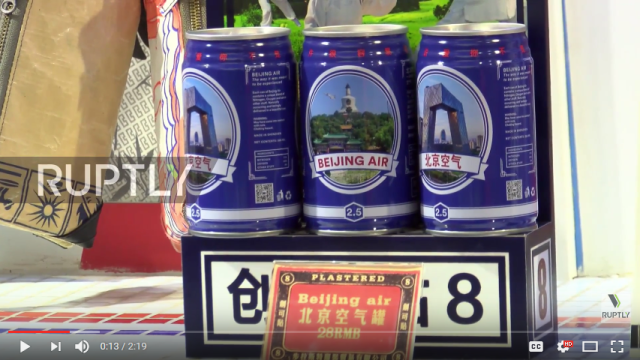
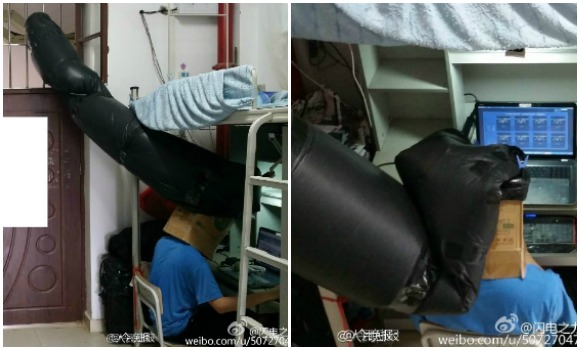
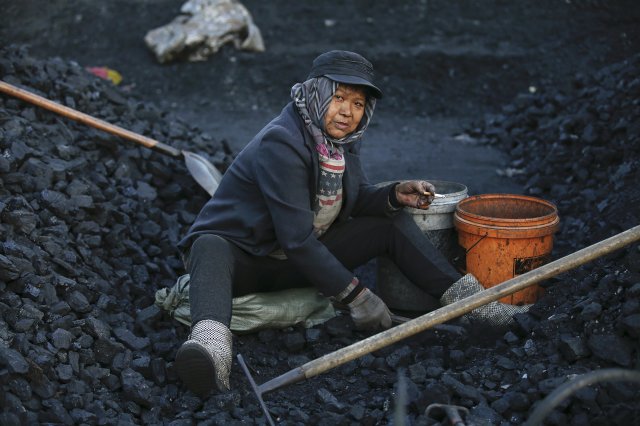
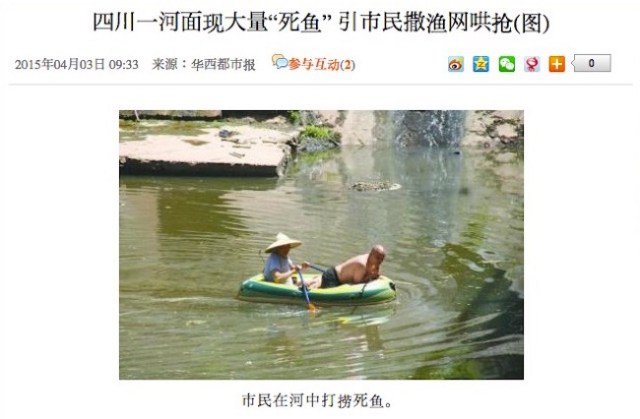

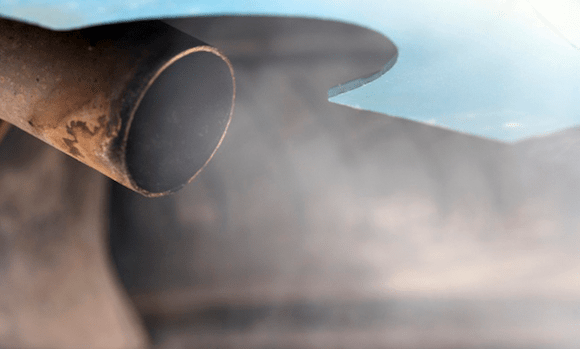
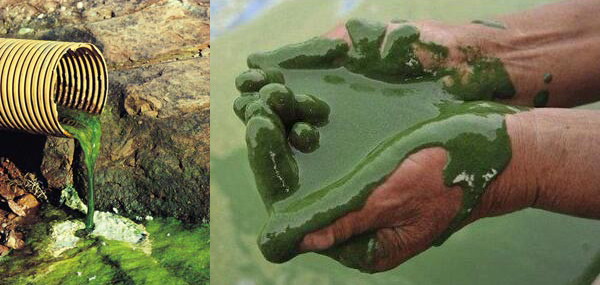
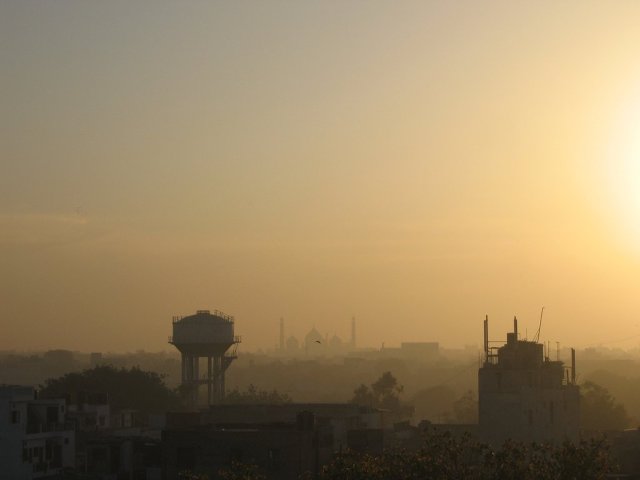
![Air quality in Beijing now so poor that sunrises are being broadcast on giant TV screens [UPDATED] Air quality in Beijing now so poor that sunrises are being broadcast on giant TV screens [UPDATED]](https://soranews24.com/wp-content/uploads/sites/3/2014/01/screen-shot-2014-01-20-at-12-07-28-pm.png?w=640)
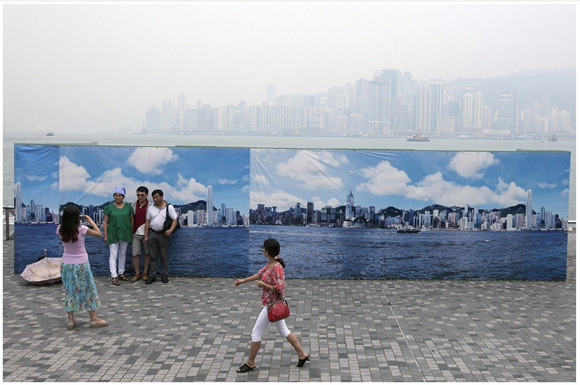

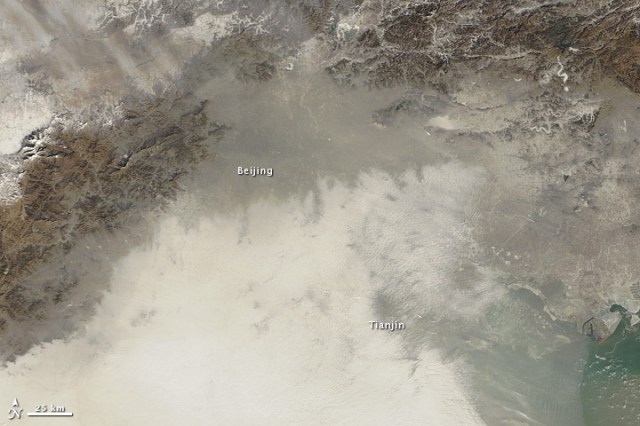
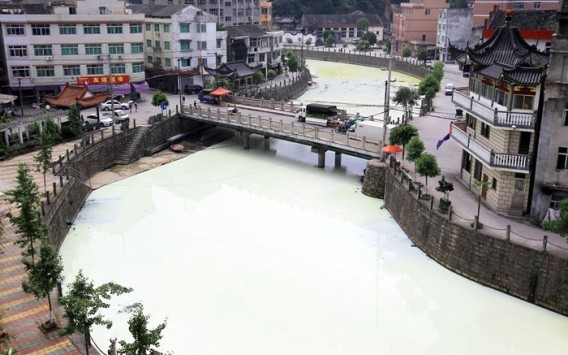
 Starbucks Japan ready to get Year of the Horse started with adorable drinkware and plushies【Pics】
Starbucks Japan ready to get Year of the Horse started with adorable drinkware and plushies【Pics】 We found possibly the quietest Japanese-style hotel in Tokyo’s bustling Shinjuku district
We found possibly the quietest Japanese-style hotel in Tokyo’s bustling Shinjuku district More Than a Capsule Stay: Why Solo Travelers Choose “global cabin Yokohama Chinatown”
More Than a Capsule Stay: Why Solo Travelers Choose “global cabin Yokohama Chinatown” New Japanese menstrual product seeks to help women spot unidentified iron deficiencies
New Japanese menstrual product seeks to help women spot unidentified iron deficiencies Studio Ghibli diorama boxes are much more beautiful than your elementary school art project【Pics】
Studio Ghibli diorama boxes are much more beautiful than your elementary school art project【Pics】 We tried super spicy wasabi ramen and yakisoba that’s rumored to make anyone cry【Taste Test】
We tried super spicy wasabi ramen and yakisoba that’s rumored to make anyone cry【Taste Test】 We visit Tomonoura, the scenic harbor town that inspired Studio Ghibli’s “Ponyo”【Photos】
We visit Tomonoura, the scenic harbor town that inspired Studio Ghibli’s “Ponyo”【Photos】 We tried eating a raw “mizu nasu” eggplant, and it tastes like a weird fruit【Taste Test】
We tried eating a raw “mizu nasu” eggplant, and it tastes like a weird fruit【Taste Test】 Nintendo’s controller capsule toys are so cool, even the machine you buy them from is awesome【Pics】
Nintendo’s controller capsule toys are so cool, even the machine you buy them from is awesome【Pics】 There’s a secret free souvenir hiding inside this Japanese train station
There’s a secret free souvenir hiding inside this Japanese train station Lacquerware supplier to emperor of Japan and Pokémon team up for new tableware
Lacquerware supplier to emperor of Japan and Pokémon team up for new tableware Japan may add Japanese language proficiency, lifestyle classes to permanent foreign resident requirements
Japan may add Japanese language proficiency, lifestyle classes to permanent foreign resident requirements 7-Eleven Japan’s ramen-cooking robot whipped us up a bowl of noodles【Taste test】
7-Eleven Japan’s ramen-cooking robot whipped us up a bowl of noodles【Taste test】 Cyberpunk anime meets traditional culture in Ghost in the Shell gold leaf Japanese changing screens
Cyberpunk anime meets traditional culture in Ghost in the Shell gold leaf Japanese changing screens Disillusionment at Tsukiji’s tourist-target prices led us to a great ramen restaurant in Tokyo
Disillusionment at Tsukiji’s tourist-target prices led us to a great ramen restaurant in Tokyo 7 great places to see Mt. Fuji from without having to climb it
7 great places to see Mt. Fuji from without having to climb it Hello Kitty Choco Egg figures are an adorable trip through three periods of Japanese pop culture【Pics】
Hello Kitty Choco Egg figures are an adorable trip through three periods of Japanese pop culture【Pics】 Starbucks Japan releases new zodiac chilled cup drink for 2026
Starbucks Japan releases new zodiac chilled cup drink for 2026 Japan’s otoshidama tradition of giving kids money at New Year’s gets a social welfare upgrade
Japan’s otoshidama tradition of giving kids money at New Year’s gets a social welfare upgrade 7-Eleven Japan starts new temporary luggage storage service in over 300 branches
7-Eleven Japan starts new temporary luggage storage service in over 300 branches Starbucks teams up with 166-year-old Kyoto doll maker for Year of the Horse decorations【Photos】
Starbucks teams up with 166-year-old Kyoto doll maker for Year of the Horse decorations【Photos】 Tokyo considering law requiring more trash cans following litter increase in heavily touristed area
Tokyo considering law requiring more trash cans following litter increase in heavily touristed area Tokyo’s Tsukiji sushi neighborhood asks tour groups to stay away for the rest of the month
Tokyo’s Tsukiji sushi neighborhood asks tour groups to stay away for the rest of the month Nintendo’s Kirby now delivering orders at Kura Sushi restaurants, but not in Japan
Nintendo’s Kirby now delivering orders at Kura Sushi restaurants, but not in Japan Tokyo event lets you travel back in time, for free, to celebrate 100 years since Showa era start
Tokyo event lets you travel back in time, for free, to celebrate 100 years since Showa era start Sanrio theme park in Japan announces plans to expand into a Sanrio resort
Sanrio theme park in Japan announces plans to expand into a Sanrio resort Stamina-destroying “Paralysis Noodles” are Tokyo’s newest over-the-top ramen innovation
Stamina-destroying “Paralysis Noodles” are Tokyo’s newest over-the-top ramen innovation Survey asks foreign tourists what bothered them in Japan, more than half gave same answer
Survey asks foreign tourists what bothered them in Japan, more than half gave same answer Japan’s human washing machines will go on sale to general public, demos to be held in Tokyo
Japan’s human washing machines will go on sale to general public, demos to be held in Tokyo Japan’s deadliest food claims more victims, but why do people keep eating it for New Year’s?
Japan’s deadliest food claims more victims, but why do people keep eating it for New Year’s? We deeply regret going into this tunnel on our walk in the mountains of Japan
We deeply regret going into this tunnel on our walk in the mountains of Japan Studio Ghibli releases Kodama forest spirits from Princess Mononoke to light up your home
Studio Ghibli releases Kodama forest spirits from Princess Mononoke to light up your home Major Japanese hotel chain says reservations via overseas booking sites may not be valid
Major Japanese hotel chain says reservations via overseas booking sites may not be valid Put sesame oil in your coffee? Japanese maker says it’s the best way to start your day【Taste test】
Put sesame oil in your coffee? Japanese maker says it’s the best way to start your day【Taste test】 No more using real katana for tourism activities, Japan’s National Police Agency says
No more using real katana for tourism activities, Japan’s National Police Agency says Starbucks Japan reveals new sakura drinkware collection, inspired by evening cherry blossoms
Starbucks Japan reveals new sakura drinkware collection, inspired by evening cherry blossoms Updated cherry blossom forecast shows extra-long sakura season for Japan this year
Updated cherry blossom forecast shows extra-long sakura season for Japan this year We tried super spicy wasabi ramen and yakisoba that’s rumored to make anyone cry【Taste Test】
We tried super spicy wasabi ramen and yakisoba that’s rumored to make anyone cry【Taste Test】 We visit Tomonoura, the scenic harbor town that inspired Studio Ghibli’s “Ponyo”【Photos】
We visit Tomonoura, the scenic harbor town that inspired Studio Ghibli’s “Ponyo”【Photos】 We tried eating a raw “mizu nasu” eggplant, and it tastes like a weird fruit【Taste Test】
We tried eating a raw “mizu nasu” eggplant, and it tastes like a weird fruit【Taste Test】 Nintendo’s controller capsule toys are so cool, even the machine you buy them from is awesome【Pics】
Nintendo’s controller capsule toys are so cool, even the machine you buy them from is awesome【Pics】 There’s a secret free souvenir hiding inside this Japanese train station
There’s a secret free souvenir hiding inside this Japanese train station 7-Eleven Japan’s ramen-cooking robot whipped us up a bowl of noodles【Taste test】
7-Eleven Japan’s ramen-cooking robot whipped us up a bowl of noodles【Taste test】 Japan’s oldest largetooth sawfish in captivity back on display in Mie Prefecture
Japan’s oldest largetooth sawfish in captivity back on display in Mie Prefecture The mystery destination of the SoraNews24 end-of-year party left us speechless
The mystery destination of the SoraNews24 end-of-year party left us speechless Sakura Havaianas on sale in Japan, modelled by twin sister musicians
Sakura Havaianas on sale in Japan, modelled by twin sister musicians Girls’ feet-flavor fried chicken now on sale in Tokyo, promises smell, stickiness of real thing
Girls’ feet-flavor fried chicken now on sale in Tokyo, promises smell, stickiness of real thing Starbucks Japan releases new zodiac chilled cup drink for 2026
Starbucks Japan releases new zodiac chilled cup drink for 2026 First live-action Spy x Family stage play video previews more in-costume cast members【Video】
First live-action Spy x Family stage play video previews more in-costume cast members【Video】 Evangelion original anime studio Gainax is now completely dissolved, Eva’s creator mourns ruined friendships
Evangelion original anime studio Gainax is now completely dissolved, Eva’s creator mourns ruined friendships Hello Kitty Choco Egg figures are an adorable trip through three periods of Japanese pop culture【Pics】
Hello Kitty Choco Egg figures are an adorable trip through three periods of Japanese pop culture【Pics】